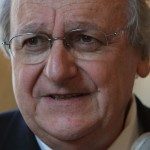Link to Pubmed [PMID] – 12911036
J. Mol. Evol. 2003 Jun;56(6):730-41
We have analyzed all di-, tri-, and tetranucleotide repeats in the partially sequenced genomes of 13 hemiascomycetous yeast species, and compared their sequences, lengths, and distributions to those observed in the genome of Saccharomyces cerevisiae. We found that most of the 13 species exhibit a unique distribution of microsatellites, not correlated to the base composition of their genome. Species close to S. cerevisiae exhibit a similar distribution, while species more distantly related show a more divergent distribution. We propose that de novo formation and continuous loss of microsatellites are active processes generating new DNA sequences. We also show that hemiascomycete-specific genes encoding transcription factors contain trinucleotide repeats more frequently than expected from their average frequency distribution. These transcription factors might play an important role in the speciation process, by regulating gene expression through DNA-protein or protein-protein interactions mediated by stretches of charged amino acids encoded by trinucleotide repeats.


